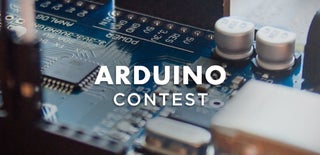Introduction: Arduino Nano HF Antenna Sweeper
I saw this in many forms around the internet and decided to build one myself. I bought a mini vna but it seems so fragile I hate to take it outside.....
I have a large collection of antennas gathered over the years by my father and myself. I figured it was time to trim down the stockpile and see just what I had.
Step 1: First Prototype
My first prototype was a single sided PCB made in a laser cutter by painting the board with a $0.99 spray can of flat black paint they lasering off the paint to form the resist pattern. I etched the board in the usual way.
I had seen many people add a buffer amp to their DDS projects and I had already made some little pcb's for these so I decided to incorporate this into the design.
I use PCB Express for these boards but recently tried JLPCB and was pleased with the results
Step 2: Boards Arrived
The boards arrived and I decided to build one without the DDS amp and one with so I could compare results. To eliminate the amp required two wire jumpers on the board. You do need the amp. Without it you get unpredictable results on antennas with a gamma match or a loading coil that provides 0 ohms dc resistance.
Step 3: Software
<p>/***************************************************************************\<br>* Name : DDS_Sweeper.BAS *
* Author : Beric Dunn (K6BEZ) *
* Notice : Copyright (c) 2013 CC-BY-SA *
* : Creative Commons Attribution-ShareAlike 3.0 Unported License *
* Date : 9/26/2013 *
* Version : 1.0 *
* Notes : Written using for the Arduino Micro *
* : Pins: *
* : A0 - Reverse Detector Analog in *
* : A1 - Forward Detector Analog in *
\***************************************************************************</p><p>/ Define Pins used to control AD9850 DDS
const int FQ_UD=10;
const int SDAT=11;
const int SCLK=9;
const int RESET=12;</p><p>double Fstart_MHz = 1; // Start Frequency for sweep
double Fstop_MHz = 10; // Stop Frequency for sweep
double current_freq_MHz; // Temp variable used during sweep
long serial_input_number; // Used to build number from serial stream
int num_steps = 100; // Number of steps to use in the sweep
char incoming_char; // Character read from serial stream</p><p>void setup() {
// Configiure DDS control pins for digital output
pinMode(FQ_UD,OUTPUT);
pinMode(SCLK,OUTPUT);
pinMode(SDAT,OUTPUT);
pinMode(RESET,OUTPUT);</p><p> // Configure LED pin for digital output
pinMode(13,OUTPUT);</p><p> // Set up analog inputs on A0 and A1, internal reference voltage
pinMode(A0,INPUT);
pinMode(A1,INPUT);
analogReference(INTERNAL);</p><p> // initialize serial communication at 57600 baud
Serial.begin(57600);</p><p> // Reset the DDS
digitalWrite(RESET,HIGH);
digitalWrite(RESET,LOW);</p><p> //Initialise the incoming serial number to zero
serial_input_number=0;</p><p>}</p><p>// the loop routine runs over and over again forever:
void loop() {
//Check for character
if(Serial.available()>0){
incoming_char = Serial.read();
switch(incoming_char){
case '0':
case '1':
case '2':
case '3':
case '4':
case '5':
case '6':
case '7':
case '8':
case '9':
serial_input_number=serial_input_number*10+(incoming_char-'0');
break;
case 'A':
//Turn frequency into FStart
Fstart_MHz = ((double)serial_input_number)/1000000;
serial_input_number=0;
break;
case 'B':
//Turn frequency into FStop
Fstop_MHz = ((double)serial_input_number)/1000000;
serial_input_number=0;
break;
case 'C':
//Turn frequency to FStart and set DDS output to single frequency
Fstart_MHz = ((double)serial_input_number)/1000000;
SetDDSFreq(Fstart_MHz);
serial_input_number=0;
break;
case 'N':
// Set number of steps in the sweep
num_steps = serial_input_number;
serial_input_number=0;
break;
case 'S':
case 's':
Perform_sweep();
break;
case '?':
// Report current configuration to PC
Serial.print("Start Freq:");
Serial.println(Fstart_MHz*1000000);
Serial.print("Stop Freq:");
Serial.println(Fstop_MHz*1000000);
Serial.print("Num Steps:");
Serial.println(num_steps);
break;
}
Serial.flush();
}
}</p><p>void Perform_sweep(){
double FWD=0;
double REV=0;
double VSWR;
double Fstep_MHz = (Fstop_MHz-Fstart_MHz)/num_steps;</p><p> // Start loop
for(int i=0;i<=num_steps;i++){
// Calculate current frequency
current_freq_MHz = Fstart_MHz + i*Fstep_MHz;
// Set DDS to current frequency
SetDDSFreq(current_freq_MHz*1000000);
// Wait a little for settling
delay(10);
// Read the forawrd and reverse voltages
REV = analogRead(A0);
FWD = analogRead(A1);
if(REV>=FWD){
// To avoid a divide by zero or negative VSWR then set to max 999
VSWR = 999;
}else{
// Calculate VSWR
VSWR = (FWD+REV)/(FWD-REV);
}</p><p> // Send current line back to PC over serial bus
Serial.print(current_freq_MHz*1000000);
Serial.print(",0,");
Serial.print(int(VSWR*1000));
Serial.print(",");
Serial.print(FWD);
Serial.print(",");
Serial.println(REV);
}
// Send "End" to PC to indicate end of sweep
Serial.println("End");
Serial.flush();
}</p><p>void SetDDSFreq(double Freq_Hz){
// Calculate the DDS word - from AD9850 Datasheet
int32_t f = Freq_Hz * 4294967295/125000000;
// Send one byte at a time
for (int b=0;b<4;b++,f>>=8){
send_byte(f & 0xFF);
}
// 5th byte needs to be zeros
send_byte(0);
// Strobe the Update pin to tell DDS to use values
digitalWrite(FQ_UD,HIGH);
digitalWrite(FQ_UD,LOW);
}</p><p>void send_byte(byte data_to_send){
// Bit bang the byte over the SPI bus
for (int i=0; i<8; i++,data_to_send>>=1){
// Set Data bit on output pin
digitalWrite(SDAT,data_to_send & 0x01);
// Strobe the clock pin
digitalWrite(SCLK,HIGH);
digitalWrite(SCLK,LOW);
}
}</p>
<br>Step 4: Time to Test Some Antennas...
The software was written in VB and included the source so I added simple screen shot button. Made it easier to save the plots....
A lot of 10M, 11M and 6M antennas in the pile...
there was a 10M loop but its cap must have dried out as it was up around 30mhz....
Without the amplifier on board that antenna would plot anything.

Participated in the
Arduino Contest 2020











